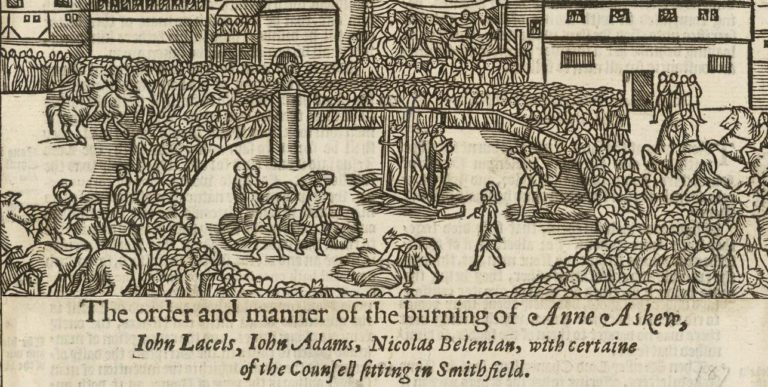They say conflict is like broken glass: try to pick up the pieces and you’ll only get hurt. At church, in ministry—it happens all the time. So we often avoid it. “I’m not getting involved,” we say. Sweep it under the carpet. Let sleeping dogs lie. We say the issue is fraught, liable to explode, a poisoned chalice.
But then we read Paul’s advice in Philippians 4: “I entreat Euodia and I entreat Syntyche to agree in the Lord. Yes, I ask you also, true companion, help these women” (vv. 2–3). Help out? Get involved? How fun does that sound?
Stages of Conflict
Well into the 90s, many theories of team management recommended downplaying conflict. Researcher and consultant Speed Leas pushed back against this. Rather than downplay conflict, his theory sought to understand it.
Leas describes five levels of conflict that tend to predominate in relationships, and which often play out in predictable ways:
- Level 1 is a problem or challenge to solve. It just needs a solution.
- Level 2 is a disagreement, often over how to resolve the issues from the problem at hand. Both of these first two levels are fairly normal and describe how healthy teams and relationships operate all the time.[1]
- Level 3, however, is a contest. Here the disagreement has not been resolved and so sides begin to form. Now there can only be winners and losers. The initial problem takes a back seat to the contest between the people themselves. From here things can escalate rapidly.
- Level 4 is the fight or flight response to the conflict. By this time people will either walk away or dig their heels in even more. If they continue to fight, the key difference is that now they will begin to strategise and raise the stakes; often dragging in others, landing personal blows, and drawing ideological lines. “They just can’t be trusted,” is an example of something you might hear.
- Level 5 is an intractable situation. At this point emotions overwhelm any problem-solving skills whatsoever. More than a fight to win, the focus has shifted entirely to winning the conflict and defeating the opponent. One or both parties have probably added to the conflict by what they have said and done during the escalation, and reconciliation here is often unlikely.
No doubt you have experienced some, if not all, of these levels of conflict. For some of us, the broken glass is imbedded deep.
As an analytical tool, though, Leas’ point is also constructive. Any conflict reaching level 3 or higher—and focusing on the person rather than the problem—is often very difficult to solve without outside help. Whether it’s the wise advice of a friend or something more formal, by this point those involved are often too attached to a position to solve the central issues by themselves. There’s no clarity or impartiality. There’s no perspective.
For some conflicts, time can be a help. But to Leas’ point, so can other people. And to our point, maybe we should offer to help others too?
Mediation and Personal Responsibility
Back in Philippians, the first thing to notice is that Paul “entreats” both Euodia and Syntyche separately by name (Phil. 4:2). Ultimately, this tango is still going to be danced by two. A go-between can help, but a relational conflict is primarily the responsibility of two parties. We can’t blame the mediator when resolutions aren’t forthcoming.
Paul’s terms of reconciliation are also important because they are fundamentally Christian. Specifically, Paul wants agreement “in the Lord” (v. 2), to have “the same mind”—one of Paul’s favourite ideas in the letter (see Phil. 2:2, 5; 3:15, 19). We don’t know the nature of the problem itself, nor if they ever found a solution. Regardless, that isn’t Paul’s only concern. It isn’t a negotiation, or a settlement about the issues alone—it’s also about renewed unity in something to do with “the Lord” (4:2). For Paul then, it isn’t that their quarrel is too small to care for, but that it’s affecting something bigger.
Mediation and Mission
As Paul calls on the help of his anonymous companion—and believe me I’ve tried to figure out who he was![2]—we sense the need for love and restoration. In Philippians, to live a life without arguments or quarrels is to “shine as lights” in a “crooked and twisted” world (2:14–16)! But there’s also a further reason for Paul urging his companion to mediate this conflict. To Paul, reconciliation isn’t just about relationships, but also the mission. He says, “help these women, who have laboured side by side with me in the gospel” (v. 3).
The driving concept here is interdependence. Twice in the letter Paul uses this picture of labouring “side by side” (1:27; 4:3). Philippi was a Roman city populated by retired soldiers.[3] Built into their consciousness would have been the memory of the empire at war, shields interlocked together as armies plunged towards the enemy. Side by side they were strong; anything less and they were not.[4]
This concept, with its military overtones, was apt for Paul’s purpose. The church is called to stand “side by side” against their “opponents” (1:27); and, like Paul, they are to “engage in conflict” for “the faith of the gospel” (v. 30).[5] The gospel is something to be defended (vv. 7, 16) and proclaimed despite affliction (v. 17). From another perspective, the gospel is like an army advancing (v. 12). The language is everywhere! Indeed, Paul’s partners are “fellow soldiers” (2:25) and their emperor is the one to which “every knee shall bow” (2:9–11).
In Paul’s mind, the ability of co-labourers to partner together is critical for the mission. In the face of opposition, hardship, imprisonment, forces of evil, and whatever else, Paul would say we’re better together. And therefore—for the fight of the gospel—sometimes fighting parties need outside help.
Mediation, Mission, and Christ
In churches it’s common today to talk of “alignment” with a vision. It’s corporate-speak for shared priorities and a common goal. It’s the kind of thing that requires leadership, attention to the big picture, a whole lot of persistence, and cut-through communication. It also requires paying attention to conflict.
It’s interesting that Paul urged his companion to get involved in Philippi. We think getting involved will only make things messy or escalate things further, and so we might put mediation in the legal category, not the church toolbox. I’m sure Paul understood that concern. But he was also wise enough to know that sometimes stepping in is helpful. Maybe it’s a well-timed tap on the shoulder that says, “hey, there’s something wrong here.” Maybe it’s a “pleading” to “agree” (Phil 4:2), or maybe it’s something more serious. Paul doesn’t discount the helpfulness of mediation among gospel partners. In serving teams or staff groups, the leader who tries to help is not necessarily overstepping the mark.
The beauty of the message of Philippians, of course, is that when it comes to reconciliation, we already have the greatest help there is. The one whose mind was committed to humility for the sake of sinners. The one whose very death served the cause of his glorious name throughout all the earth (2:5–11). To seek agreement “in the Lord” is to align ourselves with the humble example of our Lord, to align ourselves in bowing the knee to the exalted Lord, and to align ourselves in declaring his lordship throughout all the earth.
Helping God’s people unite around Christ’s mission is something to lean into not away from. It might not be the snazziest form of “alignment”, but for the sake of the gospel, mediation amongst brothers and sisters can be critical. And we honour our Lord Jesus and his mission when we’re willing to give it a go.
[1] It seems that Leas’ interest beyond Level 3 is in how conflicts can escalate in unhealthy ways. It is very important to recognise that conflicts can also escalate due to profound disagreements of conviction or practice, or due to serious misconduct—in which case disagreement is unavoidable. While those scenarios could be described in terms of Leas’ levels 3–5, and probably always feature some elements in common with these levels, they should not be reduced to this framework. Such conflicts are not the focus of Leas’ theory nor of this article.
[2] The two main options are that the phrase “true companion” is (a) a description designed to conceal the identity of Paul’s co-worker, or (b) a proper name in which “Companion” (“Syzygus” in Greek) is the name of a person. If (b) were the case, then Paul may be using the name like a pun, imploring Companion to live up to his title and help Paul reconcile their co-workers. Paul actually has a track record for this kind of word play. When he writes to Philemon, he clearly makes use of the name Onesimus (“useful”, see Phi 10–11). For more, see Ralph Martin, Philippians, pp. 172–173.
[3] Philippi was where Mark Antony and Octavian defeated the army of Brutus and Cassius, who were the assassins of Julius Caesar. In the aftermath, they resettled the city with veterans from the war and established the city as a Roman Colony. For more see, Peter T. O’Brien, The Epistle to the Philippians, pp.3–4.
[4] See Ralph Martin, Philippians, p. 93.
[5] Elsewhere in Paul’s letters, the word for conflict is the same word translated “fight” (1 Tim. 6:12; 2 Tim 4:7) and “struggle” (Col 2:1).















